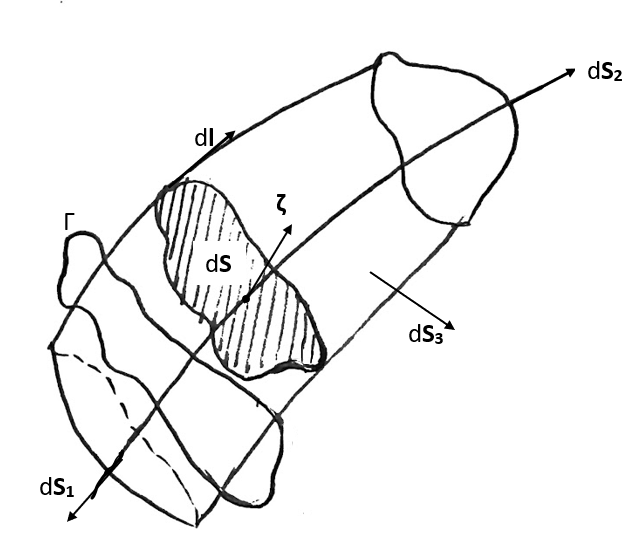Kinematics
Mass conservation for any fluid is given by
\[\pt{\rho} + \div{(\rho \boldsymbol{U})} = 0\]
which can also be written as
\[\Dt{\rho} + \rho\div{\boldsymbol{U}} = 0.\]
It can be shown for an incompressible flow that
Incompressible flow assumption
\[\div{\boldsymbol{U}} = 0\].
See Karamcheti (1980) sec. 5.3 (equation 5.15) for a rigorous derivation, or Kuethe and Chow (1997) Figure 2.15 (pg. 42) for more intuititive description.
This leads to
\[\Dt{\rho} = 0\]
i.e. density is constant for an incompressible flow.
Now Kelvin’s circulation theorem states that
\[\Dt{\Gamma} = 0\]
for a simply connected domain for an incompressible inviscid flow (in fact, more generally for any barotropic inviscid flow).
< Inviscid flow assumption
Using this theorem, it can be shown that flow is in fact Irrotational in the entire domain. Since
\[\curl{\boldsymbol{U}} = 0,\]
the field is conservative and a velocity potential (\(\phi\)) exists such that
\[\boldsymbol{U}= \grad{\phi}.\]
Armed with this knowledge, conservation of mass equation becomes
\[\laplace{\phi} = 0,\ \text{with BCs}\ \grad{\phi}_\infty = \boldsymbol{U}_\infty, \grad{\phi}_b\cdot \hat{n}_b = 0.\]
Now we can either solve this linear second order PDE using any discretisation method or we could something more clever. We note that this is a linear PDE. Therefore, if \(\phi_1\) and \(\phi_2\) are the solutions of this PDE then \[\phi_3 = c_1 \phi_1 + c_2 \phi_2,\ \text{(where}\ c_1, c_2\ \text{are any constants)}\] is also a solution of it. This means any linear combination of these two solutions is also a solution of the PDE. This suggests that we can construct the solution of this PDE by adding arbitrarily large number of basic solutions of this PDE.
To proceed we need to identify the velocity potential function for a few simple flow problems and
We note that Kutta-Joukowski theorem states that
\[L = \rho_\infty U_\infty \Gamma\]
for a 2D incompressible inviscid flow. So we only have to
